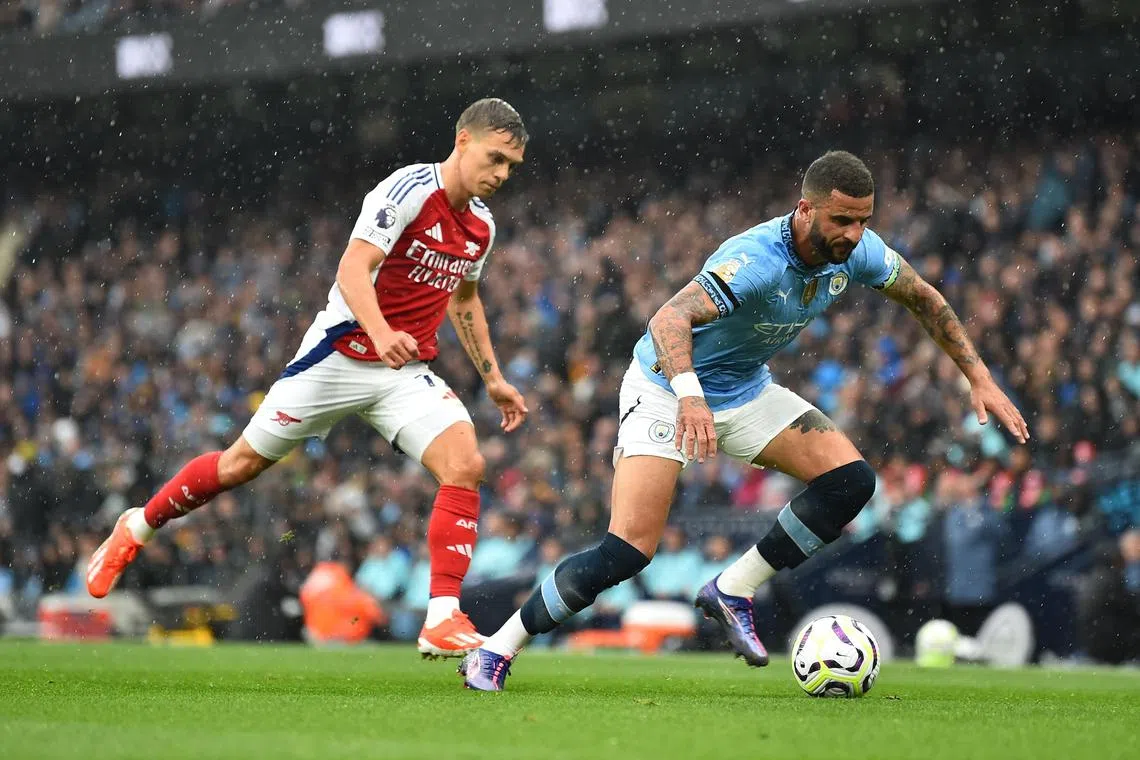Illegal streaming of live sports has gone mainstream – can anything be done?
Sign up now: Get the biggest sports news in your inbox

English Premier League matches on Saturday afternoons are banned from live broadcast as a way to boost ground attendance. This has caused fans to watch those matches from pirated streams.
PHOTO: EPA-EFE
Follow topic:
NEW YORK – Broadcasters are facing a worldwide surge in illegal streaming of live sports that is depriving them of tens of billions of dollars in potential revenue, and there seems to be little they can do about it.
The unauthorised broadcasts can be appealing to cash-strapped fans looking to watch big-ticket events without paying subscription fees. But a lot of that money would otherwise flow back to the leagues themselves, so the bootleg broadcasts are effectively sucking money out of the clubs those fans support.
Piracy of live sports has been around ever since the 1980s.
What has changed is how widespread – and normalised – it has become since sports broadcasting moved to the internet. A Google search will bring up an abundance of pirated broadcasts available with a few clicks.
The streams are advertised widely on social media, giving them an air of legitimacy and reaching audiences who would otherwise not consider breaking the law to watch their favourite team. Some of the higher-quality illegal services even have their own customer-support operations.
The result is that broadcasters are losing as much as US$28 billion (S$36 billion) in potential annual revenue, according to a study from Synamedia, which sells anti-piracy tools, and media research firm Ampere Analysis.
Almost every sport is impacted, including football, cricket, boxing and Formula One.
How does sports piracy work?
Broadly speaking, sports piracy works by capturing a legitimate stream and rebroadcasting it on another website without the permission of the broadcast rights holder.
Some pirates use social media platforms such as X, TikTok and YouTube that have live-streaming capabilities. Others use websites set up for the purpose.
Others offer modified versions of small devices known as dongles, which plug into a TV to allow access to a variety of streaming services. While dongles in themselves are usually legal, they can be re-programmed to grant access to pirated content.
The pirates make money either by selling advertising or charging subscription fees that are lower than those of legitimate providers such as Comcast’s Sky, Paramount+, Discovery+ or Dazn.
How long has this been going on?
Cameron Andrews, head of anti-piracy at Qatar-based sports broadcaster beIN, said the industry first became aware that a lot of its content was being viewed online illegally early in the last decade. Back then, the offering tended to be inferior to the real deal.
“The quality was poor, there was buffering and the thinking was very much ‘good luck to you if you want to watch sport with that level of quality’,” he said.
Since then, the standard of illegal broadcasts has improved and the number of pirated live sports events has exploded – growing by 30 per cent in 2022 across European Union countries, according to a study by the EU’s Intellectual Property Office.
The recent increase in piracy has coincided with rising subscription fees for streaming services, leading consumers to be more selective about how many they sign up for.
Why is sports piracy so hard to stamp out?
The techniques developed to detect pirated movies, TV shows and music online do not work as effectively for live content. Pre-recorded content such as a movie can be detected automatically using digital matching technology, either by an online platform at the point when someone is trying to upload it or by the copyright holder using tools to scan the web. This can allow platforms such as YouTube to block the upload before it happens, or enable the copyright holder to find the pirated content and file a legal request to have it taken down.
This type of matching technology usually does not work with a live event because there is not a pre-recorded show to compare it to. And the legal takedown process can take several hours, if not longer, by which time the event is over.
Also, when an illicit live stream is shut down, it is relatively easy for the pirate to set up a new one on a new server, leading to a game of whack-a-mole.
What are the downsides of watching illegal streams?
Some illegal streaming sites might infect computers with malware. The viewing experience might also be inferior, with poorer image quality or more intrusive ads.
Is it just about the money?
No – there are other reasons why sports fans turn to illegal streaming sites. Some offer a convenient one-stop shop for content, including sports and movies packaged together from a range of legitimate subscription streaming services.
In some cases, the only way fans can watch some matches live is through pirated streams. That is the case for Saturday afternoon English Premier League matches, which have been banned from live broadcast since the 1960s as a way to boost ground attendance at lower-league matches in the UK.
What’s being done about illegal sport streaming?
US law enforcement seized several live sports streaming domains in August. The English Premier League took a private prosecution against a gang selling cheap subscriptions, which resulted in jail sentences for five people in 2023.
In France, regulator Arcom has blocked 200 sites since the start of the Ligue 1 season.
X, Google’s YouTube, Facebook and Instagram owner Meta Platforms and ByteDance, which owns TikTok, said they remove unauthorised live streams of sports when they become aware of them. X said it was able to reduce live-streaming piracy in recent months by restricting broadcast capability to premium accounts.
However, broadcasters are demanding that they do more to enforce copyright law. BLOOMBERG

